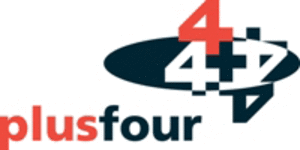The Logo Effect
Brand characters – like Ronald McDonald, Mr Muscle and the Michelin man – have long been used to give brands personality, to make them more memorable, and as a way of associating them with desired qualities.
Research has shown this to be an effective approach; exposure to brands triggers non-conscious brand-consistent behaviours – both positive and negative – and this is particularly strong for anthropomorphised brands.
But the use of ‘ethnic caricatures’ – such as the Dolmio family, Uncle Ben, and Aunt Jemima in the US – is more contentious. There has been a suggestion – though little empirical evidence – that ethnic brand imagery can perpetuate negative stereotypes. A recent US study looked into this issue and probed the conditions under which this type of brand imagery can strengthen either positive or negative implicit stereotypes.
The study’s authors also investigated to what extent political identity could affect this response – in particular the effect of the perceived ‘malleability’ of worldview associated with liberalism, compared with the ‘mental rigidity and resistance to change’ associated with conservatism.
The researchers carried out three studies. The first saw participants randomly assigned to view either an unfamiliar American Indian or kangaroo sports team logo for 30 seconds. Participants then completed assessments: measuring implicit associations between the concepts of ‘American Indian’ or ‘European American’ and ‘warlike’; and their agreement with the idea of American Indians being ‘warlike’. Other assessments measured familiarity with and exposure to American Indians, the perceived offensiveness of ethnic logos in general, and information on their demographics and political identity.
The results showed that ethnic logo exposure strengthened negative stereotypes among more liberal individuals, but not among more conservative individuals.
A second study tested the interactive effects of brand imagery exposure, stereotype valence – the intrinsic attractiveness or negativity associated with the stereotype – and political identity on stereotype activation. This effectively recreated the first study, but manipulated stereotype valence by varying whether participants viewed a logo alone or with a slogan: ‘We are Noble, We are Peaceful, We Compete with Honour’.
It also replaced the word ‘warlike’ from the implicit association test with four terms: honourable; dignity; noble; and grace.
The second study replicated and extended the findings of the first. In the ‘no-slogan’ condition, ethnic logo exposure weakened the association of American Indian with ‘noble’ for liberals, but not conservatives. However, when a positive stereotypical slogan accompanied the ethnic logo, logo exposure strengthened the liberal participants’ associations of American Indian with the ‘noble’ concept.
The third study asked whether the interactive effects found in the second had observable consequences in reality. To do this, researchers compared two US media markets: one with a more negative stereotypical American Indian-themed Major League Baseball franchise, and another with a less negatively stereotyped American Indian-themed franchise. Media markets with animal-themed franchises were used for control.
The results of the ‘field’ study seemed to corroborate those generated in the laboratory, though the authors noted that the ‘quasi-experimental design’ meant a firm causal inference couldn’t be drawn. Liberal individuals in cities with negatively stereotypical American Indian sports logos demonstrated stronger implicit stereotypes than those in cities without such logos.
“Despite the marketplace’s active promotion of stereotypic representations, prejudice and discrimination have received surprisingly little attention in consumer behaviour,” the report concluded. “The ongoing debate over ethnic brand imagery provides an exceptional opportunity for consumer researchers to influence an important societal issue.”
Activating stereotypes with brand imagery: The role of viewer political identity, by Justin Angle, Sokiente Dagogo-Jack, Mark Forehand and Andrew Perkins, Journal of Consumer Psychology, 2017

We hope you enjoyed this article.
Research Live is published by MRS.
The Market Research Society (MRS) exists to promote and protect the research sector, showcasing how research delivers impact for businesses and government.
Members of MRS enjoy many benefits including tailoured policy guidance, discounts on training and conferences, and access to member-only content.
For example, there's an archive of winning case studies from over a decade of MRS Awards.
Find out more about the benefits of joining MRS here.















0 Comments